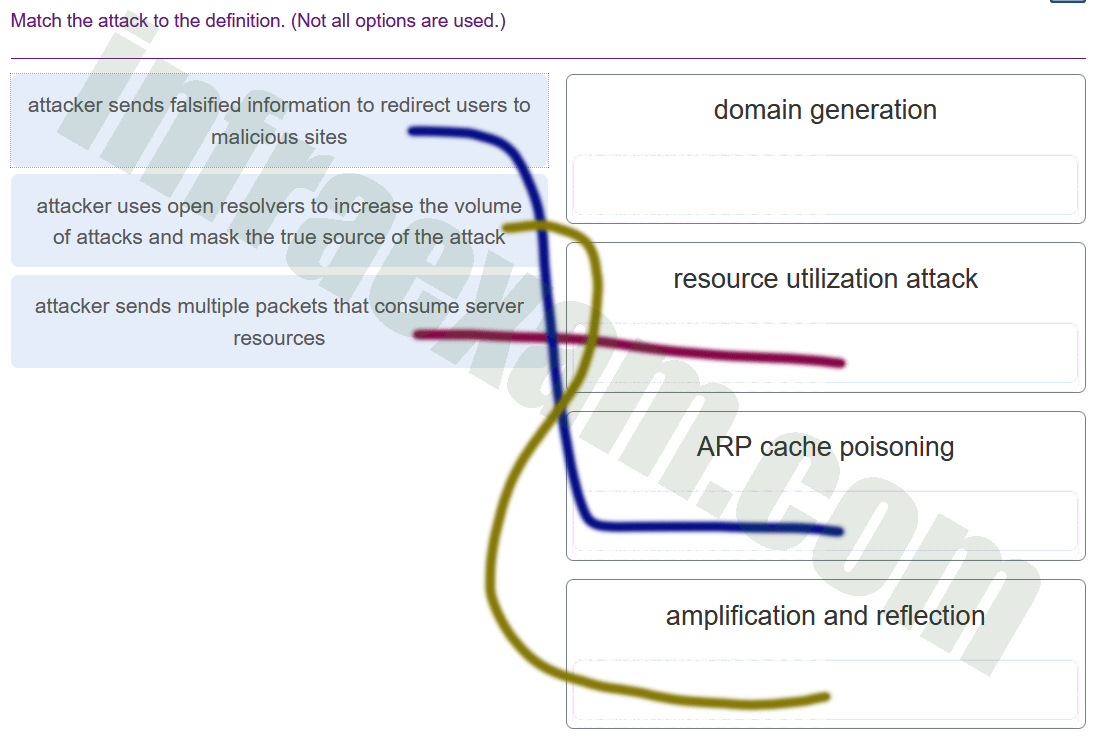Explanation & Hint:
- Attacker sends falsified information to redirect users to malicious sites: The given answer is “ARP cache poisoning.” However, ARP cache poisoning is more accurately associated with attackers sending falsified ARP (Address Resolution Protocol) messages onto a local network. This manipulates the ARP cache of the hosts and can redirect local traffic through the attacker’s machine. If the definition is specifically about redirecting users to malicious sites, the more appropriate term would be “DNS spoofing” or “phishing.” Nonetheless, in some contexts, ARP cache poisoning could indirectly lead to users being redirected to malicious sites if the attacker uses their position in the network to manipulate traffic.
- Attacker uses open resolvers to increase the volume of attacks and mask the true source of the attack: The given answer is “amplification and reflection.” This is correct; amplification and reflection attacks use open resolvers, among other techniques, to magnify the volume of the attack data sent to the victim while obscuring the source of the attack.
- Attacker sends multiple packets that consume server resources: The given answer is “resource utilization attack.” This term is broad, but it can describe a situation where multiple packets are sent to consume resources, which aligns with the definition of a DDoS attack, where many compromised systems (often part of a botnet) target a single system with a flood of traffic.
|

